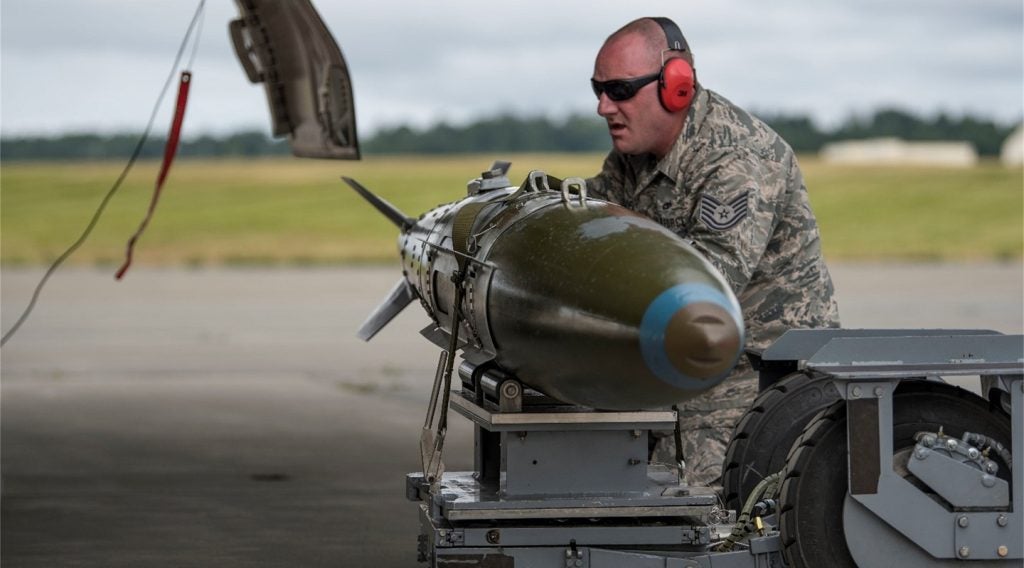
Lockheed Martin has completed 25,000 hours of simulated flight time on an F-16C Block 50 aircraft, more than the aircraft’s original design service life of 8,000 equivalent flight hours (EFH), proving its safety and durability.
The firm is also currently carrying out the full scale durability test (FSDT) of the aircraft in order to identify its definitive, safe flight hour limit.
The result of the test will allow to design and asses service life extension programme (SLEP) structural modifications for the US Air Force (USAF) and F-16 service life certification to 12,000 EFH.
Lockheed Martin F-16/F-22 Integrated Fighter Group vice-president and general manager Rod McLean said: "This testing milestone clearly demonstrates that F-16s with SLEP modifications can be safely operated longer than anyone previously thought possible.
"Enhanced F-16V capabilities, an option for both upgrades and new production aircraft, means that F-16s will remain relevant well into the future. This should provide additional confidence to current F-16 operators and potential new F-16 customers."
The FSDT will apply stress to the aircraft’s structure to represent actual aircraft usage and identify potential fatigue issues.
How well do you really know your competitors?
Access the most comprehensive Company Profiles on the market, powered by GlobalData. Save hours of research. Gain competitive edge.

Thank you!
Your download email will arrive shortly
Not ready to buy yet? Download a free sample
We are confident about the unique quality of our Company Profiles. However, we want you to make the most beneficial decision for your business, so we offer a free sample that you can download by submitting the below form
By GlobalDataThe SLEP, which is aimed to extend the service life of F-16 up to 300 F-16C/D Block 40-50 aircraft, will help to increase the current fighter force structure as the US and allied combat air fleets recapitalise with F-35 Lightning IIs.
It is claimed that the F-16 Fighting Falcon multi-role fighter aircraft is world’s most prolific fighter, with more than 2,000 in service with the USAF.
The Block 50/52 is the current production version of the aircraft, featuring enhanced engines.
Image: A USAF F-16C aircraft Fighting Falcon flies a mission during Operation Iraqi freedom. Photo: courtesy of Staff Sgt Cherie A Thurlby.







